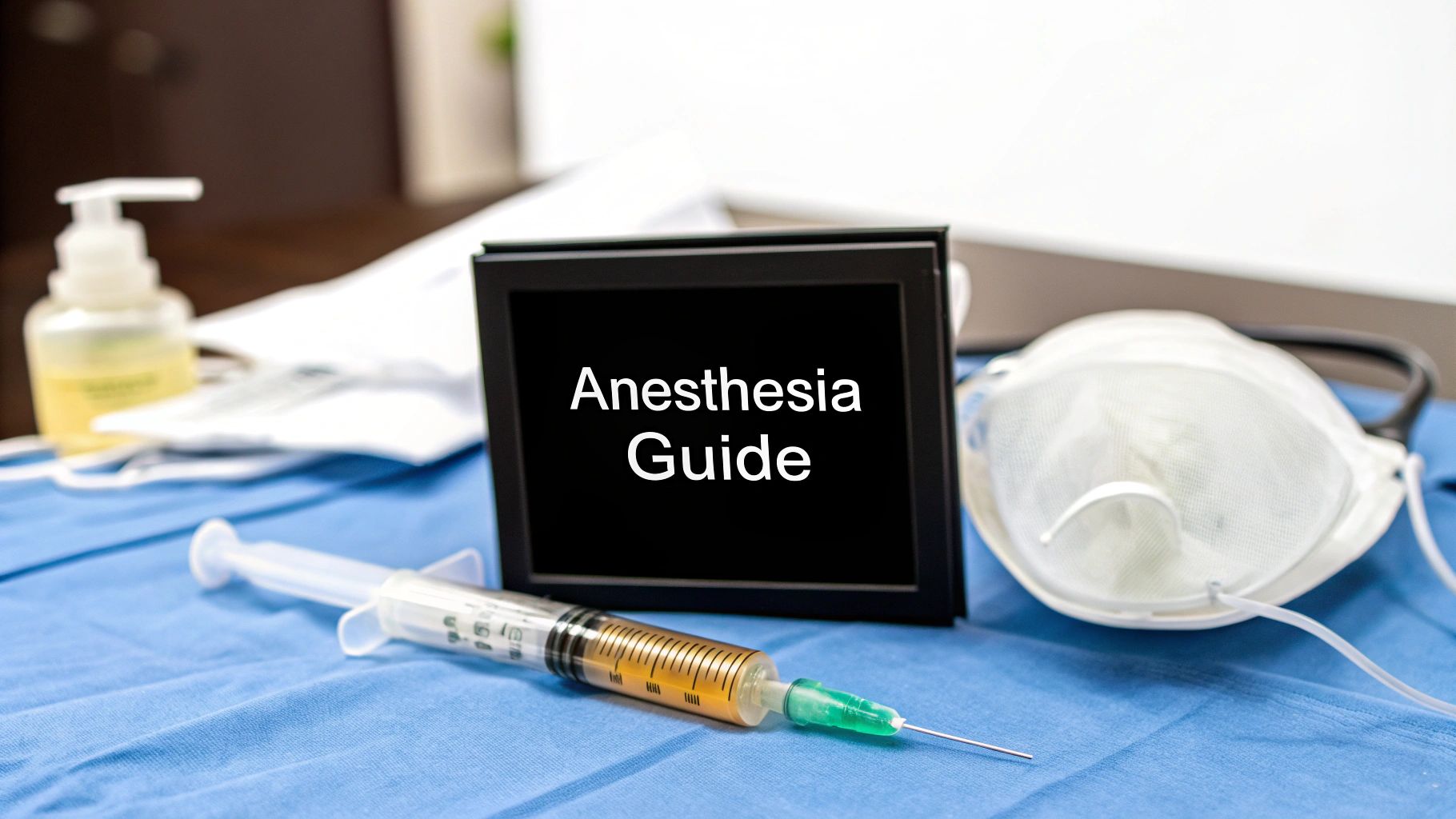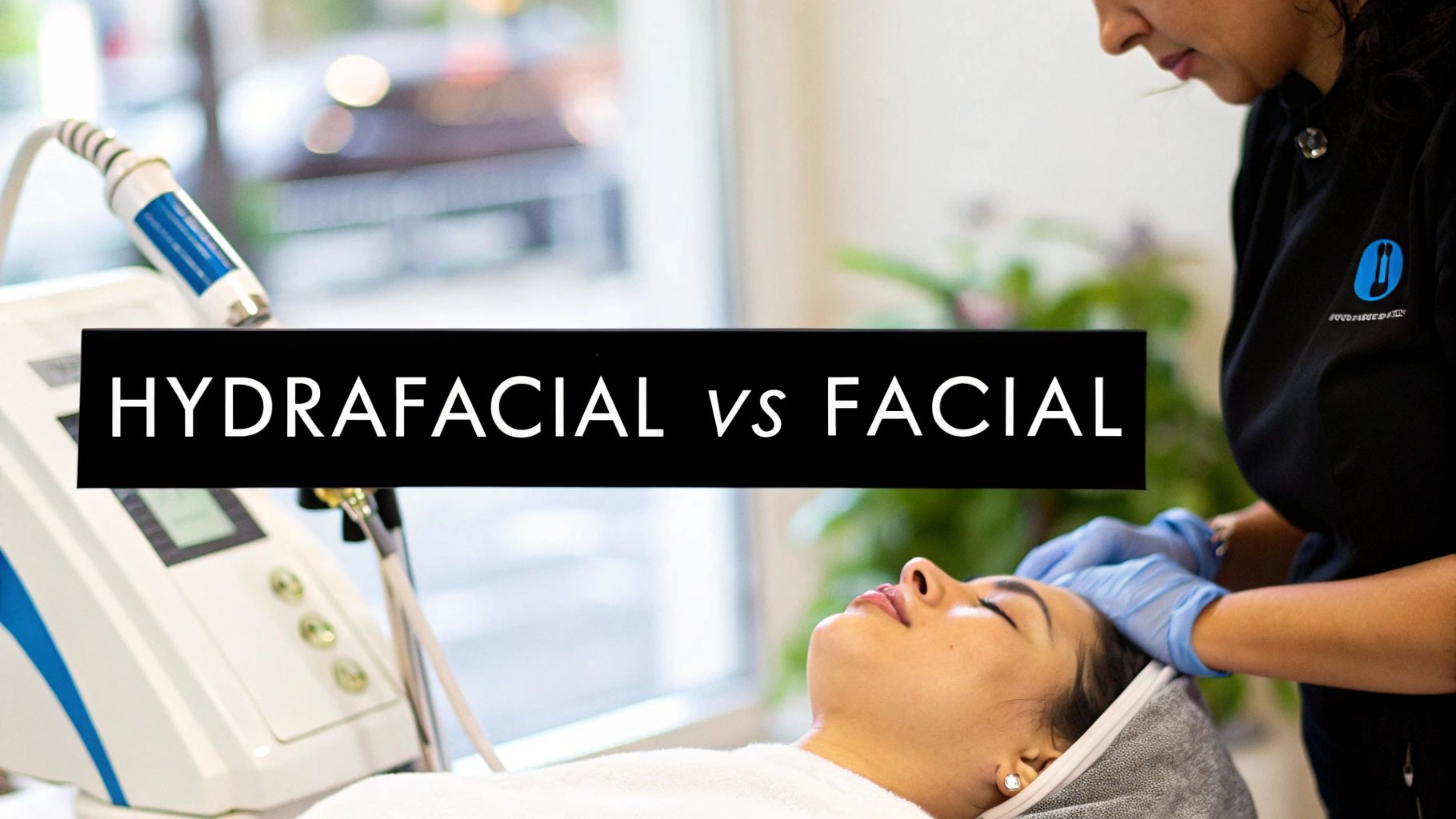
October 12, 2025
Anesthesia Types for Surgery A Patient's Guide
Discover the main anesthesia types for surgery. This guide explains general, regional, local, and sedation to help you prepare for your procedure.
Aug 24, 2025

Chemical peels have become popular for skin rejuvenation and addressing a range of cosmetic concerns. By using controlled chemical solutions, these treatments stimulate the skin's natural healing processes to improve texture, tone, and clarity. In this article, we explore what chemical peels are, how they work, their types, suitability, benefits, and essential care guidelines to help you understand if this procedure is right for you.

Chemical peels are cosmetic procedures that involve applying a chemical solution to the skin to remove damaged outer layers and encourage skin renewal. Their main goal is to improve skin texture, tone, and overall appearance by reducing the look of fine lines, wrinkles, scars, uneven pigmentation, sun damage, and age spots.
Chemical peels come in three types: light, medium, and deep. Each type uses different chemicals and penetrates to varying depths, affecting the skin in different ways. Light peels are gentler and require minimal recovery, while deep peels produce more dramatic results but need longer healing.
The principle behind chemical peels is to induce controlled injury to the skin. This injury prompts a natural healing response, leading to peeling and regeneration of healthier skin underneath. This process results in smoother, brighter, and more even skin, boosting confidence and aesthetic appeal.
The science of chemical peels revolves around stimulating the skin's natural healing mechanisms. When the chemical solution is applied, it causes a controlled damage to the outermost skin layers, often called the epidermis. This injury triggers the body's repair process.
During healing, the skin produces new collagen and elastin fibers, which help improve skin firmness and elasticity. The peel also increases cell turnover, removing dull, dead cells and making way for fresh, new skin.
Different acids like glycolic, salicylic, lactic, and trichloroacetic acid target various skin issues. For example, glycolic acid brightens and smooths, while salicylic acid clears pores for acne treatment. As the old, damaged skin exfoliates and peels away, the underlying healthier tissue becomes visible.
Ultimately, chemical peels promote a rejuvenated skin surface that looks younger, more vibrant, and more uniform. Regular treatments can also help maintain these improvements over time, making them a cost-effective part of skincare routines.
| Peel Type | Typical Chemicals Used | Main Benefits | Recovery Time | Suitable For |
|---|---|---|---|---|
| Light | Glycolic acid, salicylic acid | Improves fine lines, acne, pigmentation | Few days | Mild skin issues, uneven tone |
| Medium | TCA (trichloroacetic acid) | Reduces sun damage, age spots, wrinkles | About 1 week | Moderate scars, sun damage |
| Deep | Phenol, TCA | Significant wrinkles, deep scars, sun damage | 2 weeks or more | Severe sun damage, deep scars |
Proper pre-treatment preparation and post-treatment care, including sun protection and moisturization, are essential to optimize results and minimize complications. When performed by qualified professionals, chemical peels offer a safe and efficient way to enhance your skin’s health and beauty.

Chemical peels are classified based on how deeply they penetrate the skin. The three main categories are light (superficial), medium, and deep peels.
Light chemical peels use milder acids like alpha hydroxy acids (glycolic, lactic, or salicylic acid). They mainly target the outermost skin layer and are great for mild skin issues such as fine lines, minor sun damage, acne, and uneven pigmentation. These peels often require minimal recovery time—usually just a day or two of peeling or redness—and can be repeated every few weeks.
Medium chemical peels go deeper into the skin, reaching the middle layers. They use stronger acids like trichloroacetic acid (TCA) to treat more pronounced skin problems. They are effective for reducing age spots, freckles, pigmented lesions, fine-to-moderate wrinkles, and acne scars. Downtime extends to about a week, with redness, swelling, and peeling lasting several days.
Deep chemical peels involve the strongest chemicals such as phenol or high concentrations of TCA. They are used for severe skin issues, including deep wrinkles, significant sun damage, and scars. These peels create a controlled injury deep in the skin, leading to more dramatic results. Recovery typically lasts about two weeks and necessitates close supervision by experienced professionals, often performed under anesthesia.
| Peel Type | Chemical Agents | Typical Uses | Recovery Time | Frequency of Treatment |
|---|---|---|---|---|
| Light (Superficial) | Glycolic acid, Salicylic acid | Mild wrinkles, acne, uneven tone, sun damage | 1-2 days | Every few weeks |
| Medium | Trichloroacetic acid (TCA) | Age spots, moderate wrinkles, scars | About a week or more | Every 6-12 months |
| Deep | Phenol, High-concentration TCA | Deep wrinkles, scars, extensive sun damage | Up to 2 weeks, longer healing | Usually once or rarely |
Choosing the right type depends on skin condition, desired results, and the patient's health profile. A consultation with a qualified dermatologist helps determine the best approach for individual needs.
Searching for more details? Use search terms like "Types of chemical peels and their indications" to explore specific peel options for your skin concerns.

Suitable candidates for chemical peels are individuals with generally healthy skin who seek improvements in skin appearance and texture. The most ideal candidates typically have fair to light skin tones, categorized as Fitzpatrick types I–III. These skin types respond well to the peeling process with a lower risk of pigmentation changes or uneven skin tone.
However, some superficial peels using milder acids like glycolic or salicylic acid can benefit people with darker skin tones, categorized as types IV–VI, but require caution to minimize risks of hyperpigmentation.
Candidates often have specific skin concerns, including:
It is important to note that chemical peels are not ideal for individuals with significant skin sagging, deep wrinkles, or severe scars, which may require surgical options like facelifts.
Candidates must disclose any medical history that could influence the safety and effectiveness of treatment. This includes a history of cold sores, active infections, or recent use of medications like isotretinoin. Pregnant or breastfeeding women are usually advised to postpone peel treatments.
Before treatment, a thorough professional evaluation is essential. This involves assessing skin type, health status, skin concerns, and treatment expectations. Doctors may recommend pre-treatment skin priming, such as using retinoids or hydroquinone to enhance results and reduce risks.
Post-procedure care, including diligent sun protection, is crucial for maintaining results. Overall, chemical peels are best suited for those seeking subtle to moderate skin rejuvenation with realistic goals and in good health.
When considering a chemical peel, consulting with a qualified dermatologist helps determine the most appropriate type of peel and ensures a safe and effective procedure.

Ensuring safety during chemical peel procedures begins with a comprehensive evaluation by a qualified healthcare professional. Patients should be screened for contraindications such as active skin infections, recent use of isotretinoin, darker skin tones prone to hyperpigmentation, and history of keloids or abnormal scarring.
Performing or supervising the procedure by experienced dermatologists or trained specialists significantly reduces the likelihood of complications. The depth of the peel must be carefully selected based on individual skin type and condition. Superficial peels typically involve milder acids like glycolic or salicylic acid and have minimal downtime, while medium or deep peels utilize stronger agents such as TCA or phenol, requiring more careful oversight.
Pre-treatment skincare — including sunscreen, and occasionally topical agents like tretinoin or hydroquinone — helps prepare the skin and reduce risks. Post-treatment, strict sun protection, moisturizing, and avoiding irritating products are vital for proper healing and minimizing pigmentation issues.
Potential risks vary from minor to severe. Common side effects include redness, swelling, irritation, and temporary hyperpigmentation or hypopigmentation. More serious complications, though rare, can involve scarring, infection, or systemic toxicity from deep chemical agents like phenol. In some cases, there may be crusting, scabbing, or discoloration that persists if not managed correctly.
Monitoring during and after the procedure is crucial. Patients need to be educated on normal healing processes and signs of complications, such as increasing pain, persistent redness, or signs of infection. Immediate medical attention should be sought if adverse effects are observed.
In summary, safety in chemical peels depends on proper patient selection, use of appropriate chemical agents, skilled application, and diligent postoperative care. When performed responsibly, chemical peels remain a safe, effective cosmetic treatment with a low incidence of serious side effects.

Before undergoing a chemical peel, proper preparation is essential for safe and effective results. Patients should avoid sun exposure, tanning beds, and harsh skincare products like retinoids, acids, and exfoliants for at least one to two weeks prior to the procedure. Consulting with a healthcare professional about pre-treatment skincare routines—such as using gentle cleansers and possibly topical medications—can help optimize skin condition beforehand.
On the day of the peel, it's important to refrain from using irritating products like AHA, BHA, or benzoyl peroxide. Shaving should be avoided if applicable, to prevent skin irritation.
Post-treatment, the focus shifts to gentle skin care. Patients should cleanse their skin with cool water and fingertips, avoiding scrubbing. Regular application of soothing moisturizers and broad-spectrum sunscreens with SPF 30 or higher is crucial to protect healing skin from UV damage. Activities that cause excessive heat or sweating, such as vigorous exercise or sauna use, should be avoided for at least 2-4 weeks. Patients should resist the urge to pick, scratch, or peel their skin, as this can lead to hyperpigmentation and scarring.
Following your healthcare provider’s specific instructions—such as using prescribed topical ointments or medications—facilitates healing. Maintaining adequate hydration and sun protection during recovery not only enhances results but also minimizes complications.
Patients frequently inquire about the cost of chemical peels, which varies widely depending on the depth of the peel (superficial, medium, or deep), the size of the treatment area, and geographic location. Typically, superficial peels are more affordable, while deep peels incur higher prices due to their complexity and longer recovery times.
The ingredients involved in chemical peels are primarily acids. Superficial peels use alpha-hydroxy acids such as glycolic, lactic, or citric acids. Medium peels often contain trichloroacetic acid (TCA), while deep peels utilize stronger agents like phenol.
Patients ask about what to expect during the procedure. Treatments usually last from 10 to 60 minutes, with sensations that may include a burning or tingling sensation. Recovery times depend on peel depth: superficial peels heal in about a week, medium peels take roughly 10-14 days, and deep peels may require up to two weeks before the skin fully heals.
Other common questions involve post-procedure care—especially sun protection—and the expected results. Most patients experience improved skin brightness, smoother texture, and reduced flaws. Risks are also discussed beforehand, including possible skin color changes, scarring, or infection, especially in darker skin tones.
In summary, understanding the preparation, expected sensations, recovery period, costs, and ingredients can help patients make informed decisions and achieve the best outcomes from their chemical peel treatments.
Chemical peels offer a scientifically proven, versatile approach to skin rejuvenation that can address a variety of concerns from fine lines to pigmentation and mild scarring. Understanding the types of peels, their benefits, risks, and care requirements is essential before embarking on treatment. Consultation with a qualified dermatologist ensures personalized recommendations and safe outcomes. Whether seeking subtle maintenance or dramatic transformation, chemical peels can be an effective component of your skincare journey, delivering smoother, healthier, and more radiant skin when performed with proper guidance and care.

October 12, 2025
Discover the main anesthesia types for surgery. This guide explains general, regional, local, and sedation to help you prepare for your procedure.

October 11, 2025
Learn the key differences between hydrafacial vs regular facial to choose the right treatment for glowing, healthy skin. Read our expert guide now!

October 10, 2025
Explore the best treatments for sagging skin, from non-invasive to surgical options. Find the perfect solution to restore your youthful appearance.